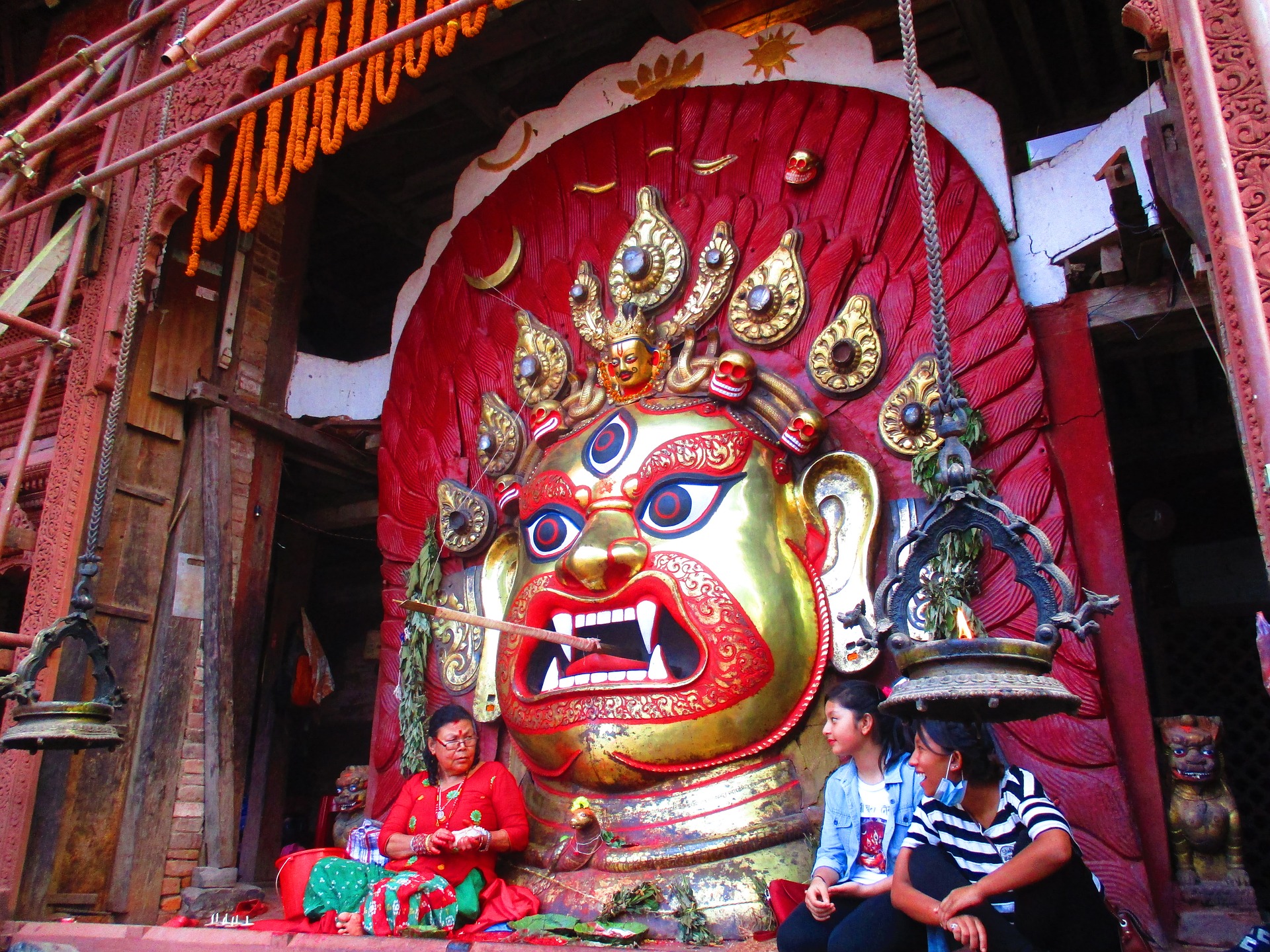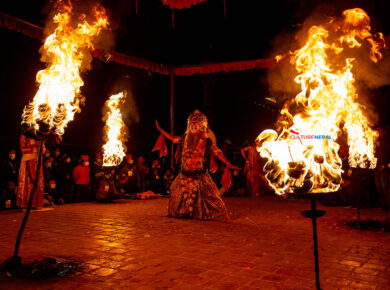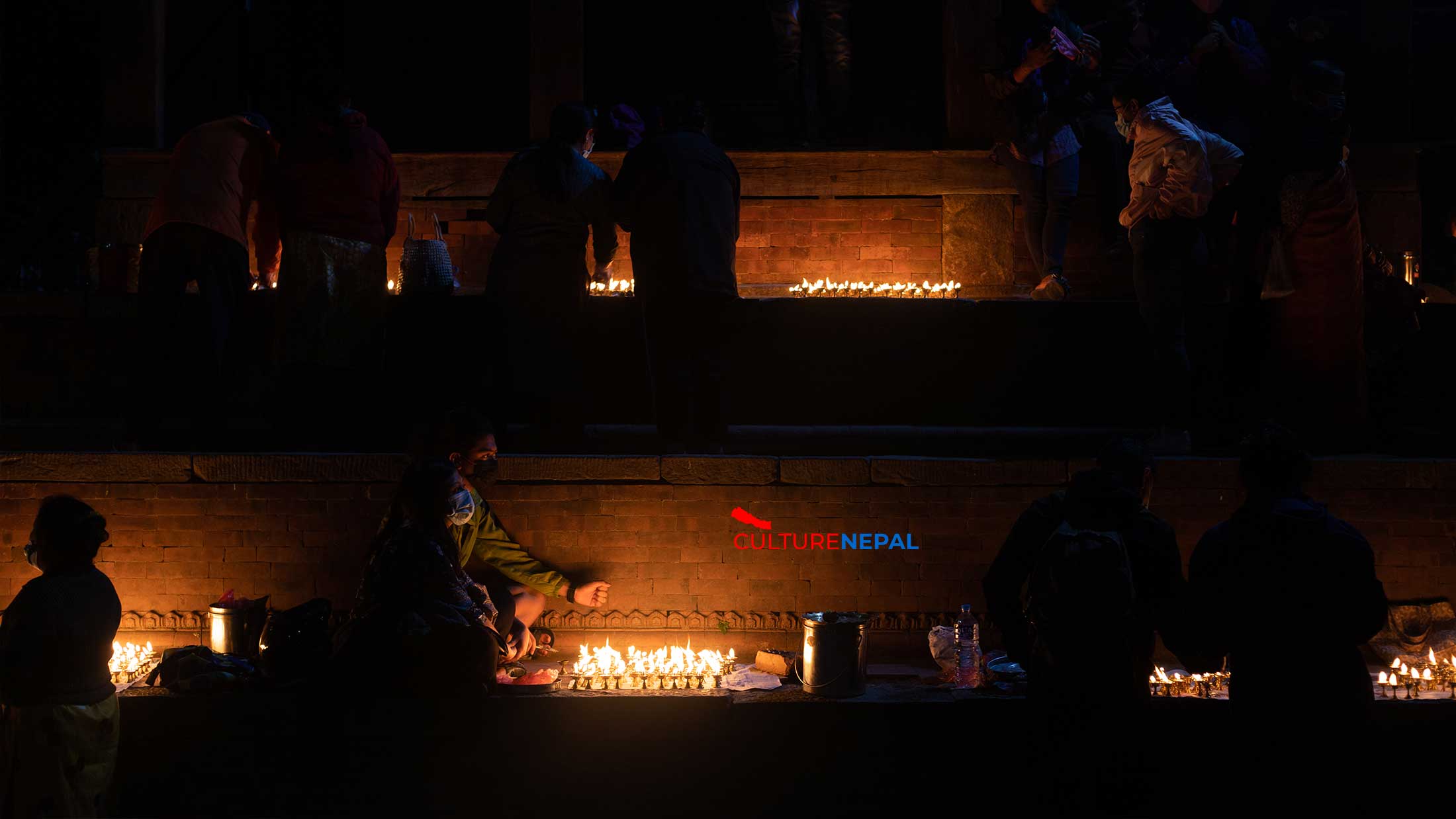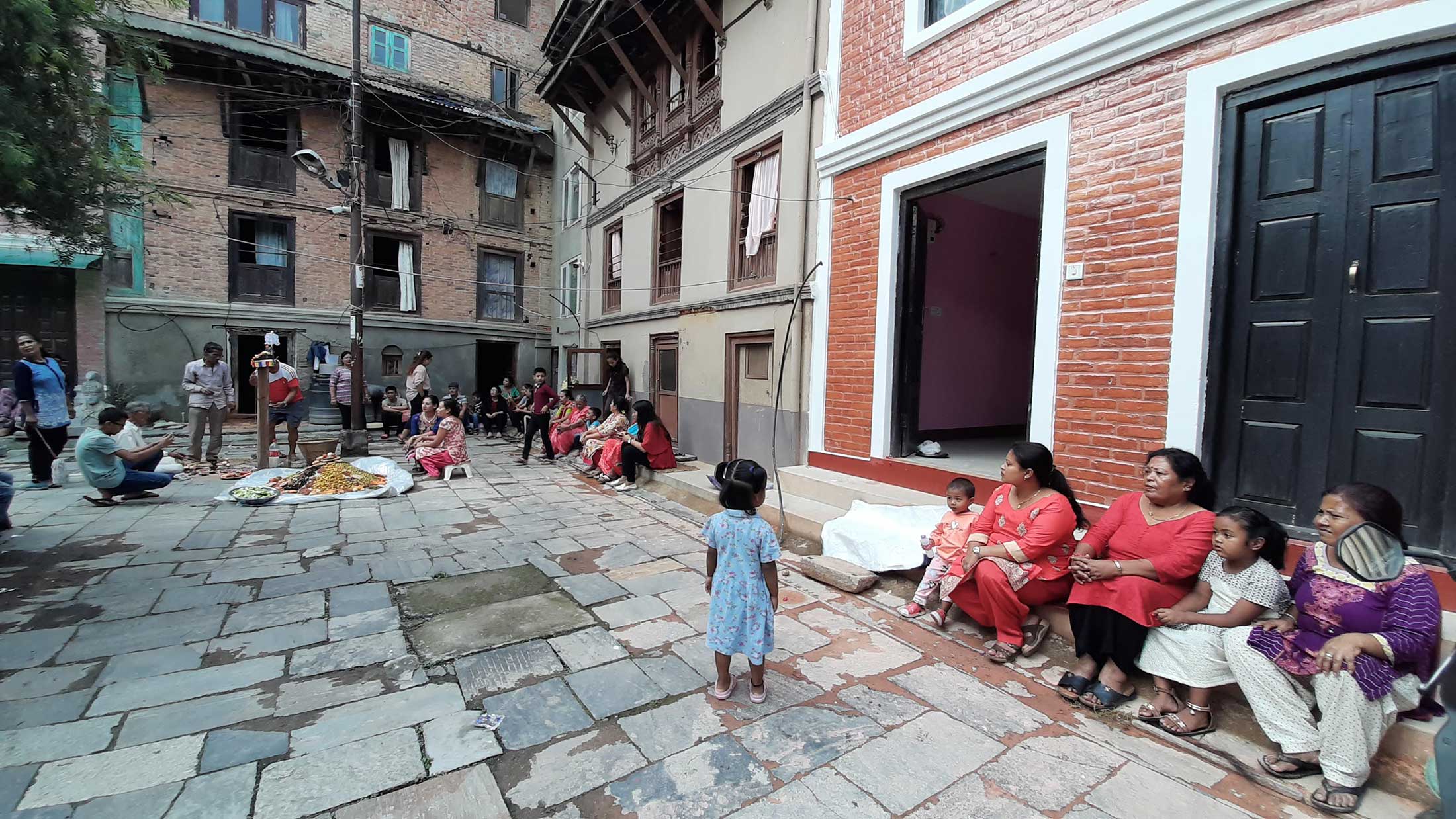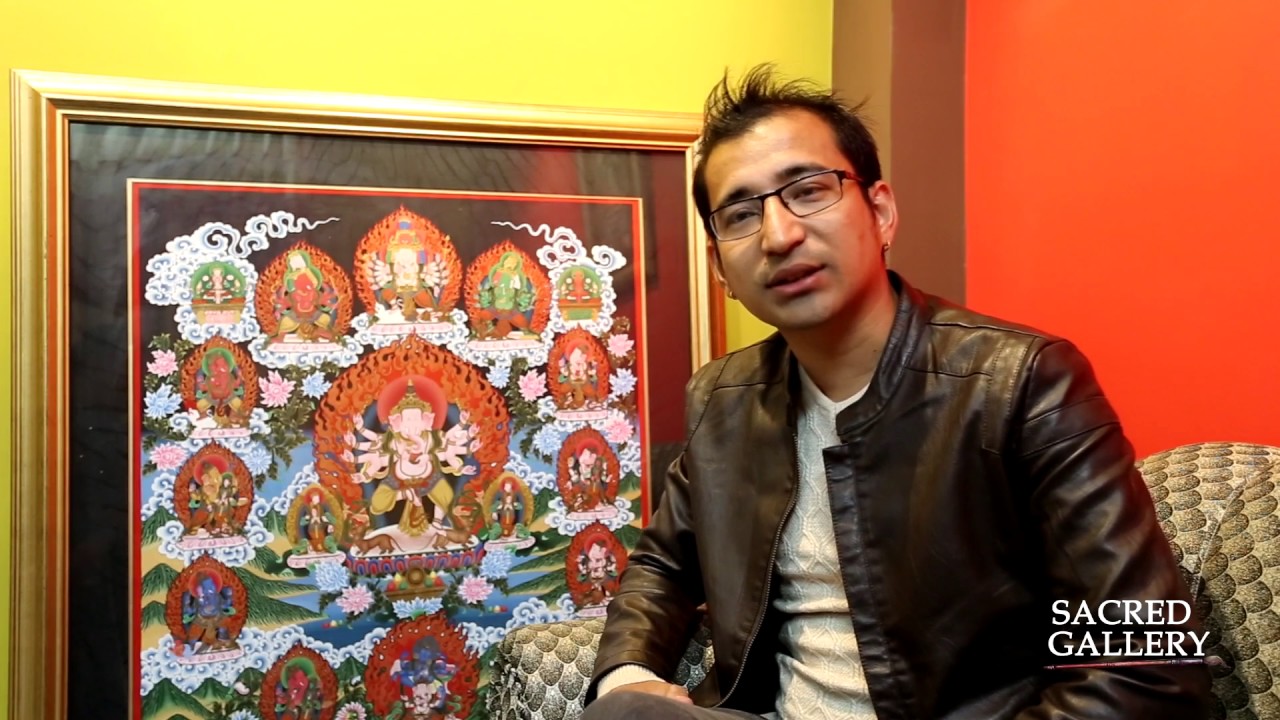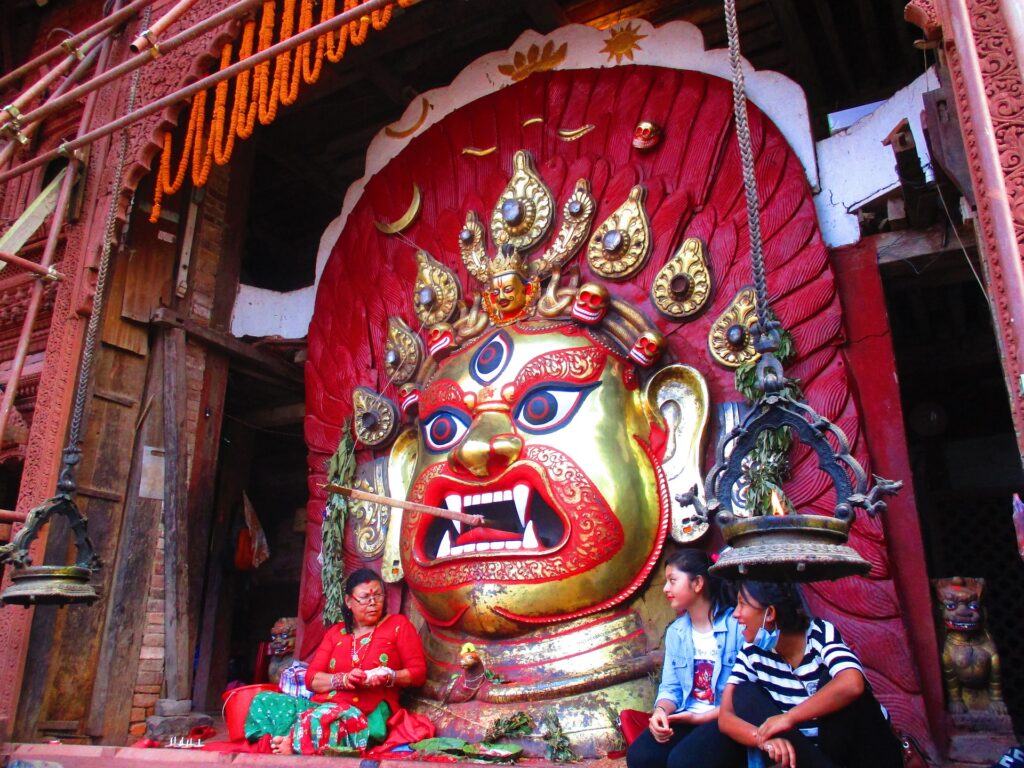
The Indrajatra and the Kumari jatra are famous for various types of dance performances of classical, semi classical, and mystic types.
Some of the famous ‘Nach or dance troupes are the Bhairava-Nach, Majipat Lakhe-Nach, Devi-Nach (Gathu phyakhan), Mahakali-Nach of Bhaktapur, Halchok Bhairava-Nach, Pulukisi-Nach, Das-Avatar Nach and Sava Bhakku. These Nach-s come into life during the festive occasions to entertain the spectators. Most of these Nach-s are associated with the Kumari, therefore, these have to follow the Kumari’s car-procession to make it impressive through the cultural standard.
Bhairava Nach
The Bhairava Nach is said to have been originated from an incident when Lord Bhairava’s daughter Kumari became engaged in love with a demon. Bhairava was defeated in a battle with the demon but Bhairava’s wife Phandi Devi offered a drink to Kumari and only after that the Kumari herself killed the demon.
The dance is first staged at the Kilagal tol and thereafter in other different tols during the Indrajatra.
Majipat Lakhe dance
The Vamshavali work contains a legend pointing to the origin of Pajipat Lakhe dance during the medieval period when the Kathmandu city was ruled by the Nuwakot Baishya Thakuri rulers ((Lamshal 2023 28.)
According to the said source a demon (Rakshasa) lived in the Majipat locality towards the west of the Kathmandu city. The demon used to come to one cchipani (dyer) woman living in the southern side of the city of Kathmandu every night and returned to his place. The Baishya Thakuri rulers heard that and met the demon and made him swear to agree to dance as Lakhe during the Indrajatra wearing a mask. It is also alleged that the rulers had established the demon in the Majipat tol of the Kathmandu city (Wright 1966:166). In the gene alogy the Lakhe jatra is described to be a Buddhist cermony which had become prevalent in honour of Shakyamuni Buddha having obtained a victory over Namuchi mara [or cupid] when the latter came to distract his attention, while he was sitting under a Bodhi tree in profound meditation for the purpose of becoming a Buddha. After his victory Brahma and other gods came to pay their respects to Brahma, for which reason the gods are represented in this jatra (Pright 1966:104) this jatra was discontinued for sometime and was revived by King Gunakama Deva.
Devi-Nach
This Nach is constituted by 7 members of Jyapu clan people of the Kilagal tol of the Kathmandu city. Three of them disguise in special robes and masks to become Bhairava, Kumari and Phandi deities. Other four disguise as Demon, Kankal, (skeletal body), Vetal and Khyak. All these members perform centuries old set of dance accompanied by an appropriate musical band.
This dance-troupe present is to performances in the different localities of the Kathmandu city during the Indrajatra.
It is believed that this dance-type was invented during the Malla period to dispel the epidemic of an unknown illness.
The main theme of this dance is that the virgin goddess subjugates the epidemic symbolised by the demon and thus the country is saved.
Pulukisi Nach
This ‘Nach’ is peculiar because it represents an ‘Elephant dance’. Lord Indra’s vehicle is a supernatural elephant named Airavata. This supernatural elephant is represented dancing in this ‘Nach.
The shape of the medium sized elephant is built with bamboo stripes and wood covered with a piece of cloth painted with the shape of an elephant. Two persons hide within this frame and play as an elephant’s dance, accompanied by the music of a bell. An age old custom is prevalent that the spectators should not wear caps otherwise the supernatural elephant’ may snatch them away.
Dance Performance of the ten incarnations of Lord Vishnu
Scenes from the ten incarnations of Lord Vishnu are enacted every night during Indrajatra on the staircase of the Trailokya Mohan Narayan temple (north-western side of the Kumari temple).
Sava and the Bhakku
During the Sava-Bhakku Nach a wild male water buffalo [fed up with liquors] is set free to be faced by a festively dressed up masked man representing Bhairava, the god of terror and death. The man, called as Bhakku with a scimitar in his hand charges the buffalo. It is like a ‘Bull fight’.
This ‘Nach’ has become extinct because it was thought inhuman to continue such a fight. Otherwise it was played in the Nasalchok and in the procession of the Kumari’s car festival.
